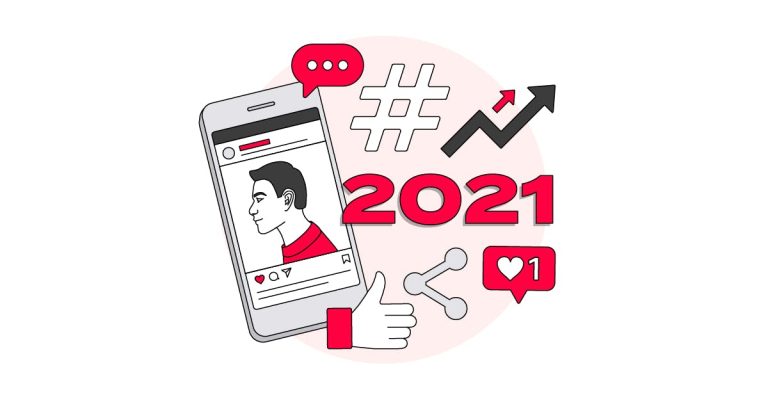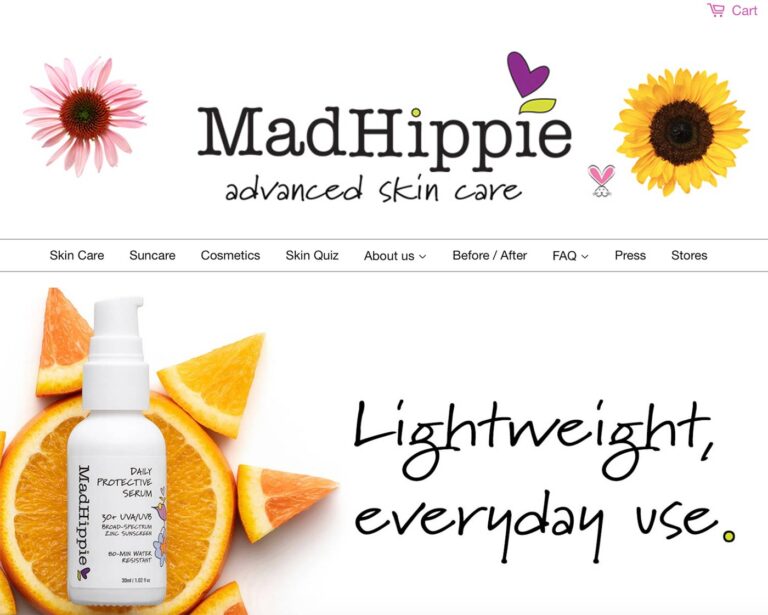Slack is able to grow its user base with a smooth onboarding process and small details such as an engaging loading screen and cool emoji and GIF options for users. A mix of fun and function is what it takes to create a user experience that generates conversions.
In order to help you optimize conversion rates and make the most of your existing traffic, we spoke with some marketing experts with their fingers on the pulse of CRO trends.
The concept of optimizing a website to rank better in search engines has been around for eons, if you run on digital time (if you think about it, the first website launched around 1991, and the first “search engine” followed in 1997).
Persona-driven content extends to on-page content optimization as well. Conversion rate optimization is all about the landing pages. Weaving persona content into your landing pages can dramatically improve user experience and conversions. As counterintuitive as it sounds, this means your brand will achieve better website conversion rates if it avoids turning landing pages into a sales pitch for your product or service.
1. AI & Innovative Tech to the Rescue
In 2020, CRO teams will become increasingly involved in the relationship between conversions, user experience, and search engine optimization. Steven van Vessum, VP of Community at ContentKing says, “The impact of User Experience on SEO is growing. Search engines are getting better at figuring out when a user’s question has been satisfied on a page. And that’s where SEO, UX and CRO come together: if you provide great UX and make sure users reach their goals on your pages because of doing CRO, you’ll find that your SEO performance will go up.”
Ben Culpin, Content Strategist for WakeupData, says, “For Ecommerce businesses, the information you provide shoppers about each product is vital to your overall conversions. What this doesn’t mean is stuffing product titles and descriptions full of keywords. Instead, approach it from your customers’ perspective and answer questions they might have.”
Finally, link managers provide complex analytics and UTM builders and presets for ease in campaign creation. In the future, expect more CRO teams to take advantage of tools with out-of-the-box functionality for link management and workflow.
Fighting “Form Blindness” with Survey Technology
It’s all about optimization and tagging, Culpin explains, “Optimize your product descriptions so they don’t just include the basic info like color, brand, material or size. If relevant, include technical specifications and special features which make your product unique and stand out more. In some cases, you won’t know which factors need adding to a description until a customer leaves a review asking for it. Make sure you frequently update your product descriptions and you’ll undoubtedly see a rise in conversion rates.”
Marketers thrive on customer data. But how many surveys is too many? More than 70% of consumers say surveys interfere with a website’s experience, and nearly 80% abandon a survey before it’s completed. This “survey fatigue,” also called “form blindness,” can greatly hinder your brand’s ability to collect data that’s critical to informing its CRO efforts.
However, URLs, especially those used on larger websites such as Facebook posts, can be ugly and off-putting for customers. Moreover, many URL shortening services can disrupt your domain identity by creating links with improper branding that seem untrustworthy to the consumer eye.
Baptiste Debever, Growth & Co-founder at feedier.com says, “I believe the time of pushy and purely salesy pages is over. I’ve seen and had way better conversion rates from pages explaining a problem, instead of explaining a solution. People have a job to do, they are not looking for feature-dumping. This is a simple, yet extremely valuable, hack. The key is to create as many pages as you have different audiences so everyone finds what they are looking for.”
2. User-Centric Design Principles Encourage Cross-Discipline Collaboration
Martinez and his team structure homepage content to contain a roundup of market news that would be of interest to these personas, and then subsequently funnel visitors through the entire journey of sports betting in four simple steps. In this way, US Betting Report helps to speak to two distinct individuals at once within a vertical that already has incredibly specific buyer intent, increasing the chances of an online conversion.
Did you know that only 2% of traffic converts after the first visit?
One example of advanced segmentation can be seen in websites like Manuel Martinez’s US Betting Report, an online business which leans heavily on conversion rate optimization.
Take a look at the 4 most compelling CRO trends to watch in 2020:
That said, a holistic approach to enterprise SEO strategy encompasses multiple approaches. So, where should your brand focus in 2020 and beyond? Let’s take a look at what some other SEO experts are saying.
AI has become a buzzword in the martech industry. In a general sense, AI has tremendous application across every industry for its ability to help automate manual processes, thereby enabling us humans to focus on higher-order tasks.
Additionally, retail brands want to increase the traffic to landing pages through the creation and sharing of page links, especially within social content. To do this, many brands turn to shortlinks to increase click-through rates.
3. Advanced Audience Segmentation Leads to Better Content & More Conversions
Look to Slack as an example of user-centric design at the core of content strategy. Slack’s collaboration and workflow platform has become nearly ubiquitous as of late, due in no small part to their commitment to simplistic, user-friendly interfaces and features.
Their capabilities, which span end-to-end optimization efforts, range from keyword research to content performance and website auditing. CROs can leverage tools like these to take stock of, and make plans to improve their share of organic traffic – even in the most competitive verticals. In the future, tools like these will make SEO more intuitive for SEO professionals and in-house marketers alike.
Experimentation is at the very core of marketing strategy. Experimental tasks, like split testing and A/B testing, however, can take a considerable amount of a marketer’s time.
UX research will not only uncover human insights that are critical in successful design, but will also clearly identify features and designs that products should have in order to drive usage, customer satisfaction and ROI.
Comprehensive SEO research and reporting suites like Mondovo, Moz, or Ahrefs are quickly becoming a vital part of the SEO-CRO toolbox.
Or you are going simpler with the concept of personalization, catering relevant content and experiences to relevant groups rules the roost.
Vos suggests deeper segmentation. If your brand targets a diverse audience and offers products and services to a range of people, “try splitting it up into smaller versions and therefore concentrate on the more advanced segmentation. We can see this trend working on Instagram already: big brands have separate pages for different segments of their audience, splitting them up by age, shopping habits, geolocation, etc. It gives consumers a more personalized experience and makes them more likely to buy. As a result, conversion rates grow.”
Eneco’s marketing team built an interactive calculator that gave consumers an idea of what it would cost to buy an at-home electric charger for their vehicle, and subsequently converted respondents into leads.
Buyer Personas in Action on Landing Pages
Thus, bespoke link management tools have grown in popularity in order to best help brands manage branded links on a large scale. Rebrandly URL Shortener, for example, is a link management platform that enables CROs to manage traffic from branded links across multiple domains, as well as route site traffic to landing pages via SEO redirects, retargeting campaigns and more.
Conversion rate optimization is thriving in 2019, and will continue to grow in importance in 2020 and beyond. Automated tools, a focus on user-centric content and design, personalization, and holistic SEO strategy will enable brands from enterprise to independent retailers to take control of their organic traffic and optimize their website conversion rates.
4. SEO Plays Nice with CRO & Levels the Playing Field for Brands
In CRO, SEO and UX, experts are gathering around the principle of designing content with the user first in mind. In fact, Gartner just recently announced its top digital experience trends for 2020, listing “UX research renaissance” as a key trend.
Page load time plays a role in bounce rate, or how long users remain on a page, and therefore influences online conversions. David Campbell, Digital Marketing Strategist at Right Inbox, says, “People are expecting your site to load as quickly as possible and that’s not going to change in 2020. Page speed is one of the most important factors when it comes to optimizing your website conversion rates and it’s important to focus on improving it immediately.”
Lesley Vos, Content Strategist at Bid4Papers, echoes this sentiment, “I’d advise marketers pay attention to authenticity in 2020. Nano-influencers and microbrands rule the roost now because of this trend: they demonstrate a higher percentage of engagement than brands with 100K+ followers, looking more authentic and, at the same time, more customer-centric, targeting a specific audience.” UX also impacts your site’s SEO, which plays a significant role in converting site visitors. UX has become a major ranking factor for Google, as it helps engage and keep users on a site amidst a competitive internet landscape. By optimizing website content and creating an experience that answers questions users have, your brand can greatly increase its conversion rates.
Max Benz, CEO and Co-Founder of suitApp.de says, “If you want to optimize your conversion rates, don’t forget about the basics. You can set up the greatest experiments, but if your site is loading slowly, it’s a waste of effort. Your visitors don’t want to wait. They want your content and they want it NOW. To analyze your current pagespeed, you can use free tools like Pingdom or GTMetrix.These little helpers will provide you with detailed information on your pagespeed and actionable recommendations on how to improve it.”
Audience segmentation is a trend that’s growing increasingly popular among CRO experts. It doesn’t matter whether you are looking to target granular audience segments with a tool like Convert Experiences and its powerful targeting engine.
Mobile Optimization
Such tools also help teams track link performance across team members, so department leaders can easily manage the contributions of their team.
Levi Olmstead, Founder at LeviOlmstead.com, says, “Google’s move to mobile-first indexing will disrupt how brands structure their entire site. The move means Google will crawl all new websites and pages with their mobile Googlebot, and websites that have mobile-friendly architecture will rank better. This is important for CRO, as entire sites will need to rethink how they structure their content – from landing pages, to CTA buttons, to blog content.”
Page Speed
Chanty says, “AI will make a major impact in analyzing the performance of landing pages and CRO. Previously, we had tools for A/B testing, but the development of new tools is letting us test page elements that we never could have before.”
The solution? A focus on interactivity, made possible through the use of survey technology. Take Dutch company Eneco, for example. How did marketers at one of the largest producers and suppliers of natural gas, electricity, and heat in the Netherlands make their subject matter engaging enough to generate nearly 1,000 new leads in just 6 weeks — using a single survey?
Ecommerce Product Descriptions
A key concept that CROs and SEOs have to bear in mind is that as Google and Amazon dominate the search advertising market (with 73% and 12.9% of the 2019 market, respectively), savvy marketers are beginning to take notice and shift their strategy accordingly. Brand prominence no longer guarantees the lion’s share of customer conversions; any brand with a valuable product and strong on-and-off-page SEO strategy can gain organic visibility in search results.
Van Vessum continues, “That makes for a fascinating trend, which will lead to SEO, UX and CRO teams working closely together and — finally — aiming to achieve the same goals.”
According to this article on enterprise SEO by Jonas Sickler, the world’s leading brands are starting to seek out SEO expertise. “SEO for enterprise involves a myriad of complex factors, from content optimization, backlink analysis, technical markup, and more. Smaller brands are often more nimble and able to adapt to algorithmic shifts and changes in the market. In 2020, I expect to see a shift towards a more holistic view of SEO, as well as an increase in enterprise search budgets.”
Branded Link Management
Enterprise brands, especially those in the Ecommerce vertical, have a lot of products. In order to maximize ROI, marketers need to focus on optimizing product descriptions.
Google has long prioritized mobile-first indexing and, in 2016, mobile searches officially overtook desktop. In the years since, multiple updates have shifted the way marketers approach website optimization, from site structure to page speed.
Martinez structures his on-page optimization to cater to two specific audience personas: those interested in the sports betting industry in general, and those who are novice betters who want to understand where sports betting is legal and where they can bet.
Data shows that using persona-based content has increased website leads by as much as 97% in some cases. In this way, your brand is better able to craft targeted marketing messages that are geared towards conversions.
This thoughtful approach avoided the stale atmosphere of a traditional survey and was infinitely more successful. This is the stuff CRO dreams are made of, and an indicator that interactive content will continue to grow in popularity into 2020.
Takeaways
Marketers spend a staggering amount of time dissecting the customer journey in order to better align their online offerings to buyer intent. Let’s face it — whether your brand is focused on dominating organic search via SEO, or has honed in on PPC, it hardly matters if your website isn’t up to snuff. Your website landing pages have to be airtight, from navigation to form fields to on-page content.







